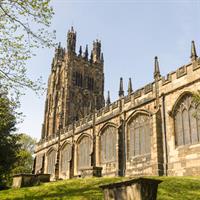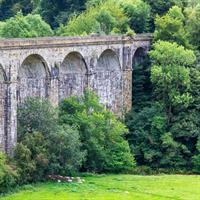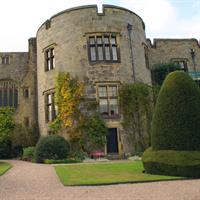close X
Cardiff
Cardiff is the capital of Wales. It is also its most populous city and the epicenter of political, economical, social, and cultural life in Wales. With over 20 million visitors arriving each year, it is easily Wales`s most-visited tourist destination. In the early 19th century, the small town of Cardiff experienced a meteoric rise as one of the principal ports in the British Empire, and the area around the port is now a noteworthy tourist area which is home to such buildings as the Welsh National Assembly, the Pierhead Building, and the Millennium Centre. Other noteworthy sights include the BBC Drama Centre in the city center, where such TV shows as the dramas Casualty and the Welsh-language Pobol y Cwm are recorded; and the city`s two grand cathedrals: Cardiff Cathedral (Roman Catholic) and Llandaff Cathedral (Anglican), the latter dating from the 12th century. Cardiff Castle was built on the site of a 3rd-century Roman fort; the castle we see today also dates from the 12th century.
Visit Cardiff Castle, Cardiff Bay, St Fagans National Museum of History, National Museum Cardiff, Caerphilly Castle, Wales Millennium Centre, Mermaid Quay, Llandaff Cathedral, Cardiff Cathedral, Pierhead Building, and so much more!
close X
Swansea
Swansea is the second-largest city in Wales and one of the two principal cities of the historic county of Glamorgan. The city sits on Swansea Bay and the western bank of the River Tawe. The maritime district is home to Swansea Museum, the oldest museum in Wales, as well as the National Waterfront Museum and the museum dedicated to the life of celebrated Welsh poet Dylan Thomas. In the vicinity there are many parks and nature reserves, and the area in and around Swansea is considered one of the most ecologically diverse and beautiful regions of the United Kingdom. The city is situated on the far eastern portion of the Gower Peninsula, the first area of the UK to be named an `Area of Outstanding Natural Beauty`. Swansea is a popular beach and surfing destination, and is also a hub for nightlife, as is the small seaside community of Mumbles that sits southwest of town.
Visit Swansea Bay, National Waterfront Museum, Mumbles Pier, Oystermouth Castle, Clyne Gardens, Swansea Marina, Swansea Museum, Glynn Vivian Art Gallery, Swansea Castle, Dylan Thomas Birthplace, and so much more!
close X
Caernarfon
Caernarfon is located in an advantageous spot at the mouth of the River Seiont on Wales`s northwestern coast, just across the Menai Strait from the Isle of Anglesey, and also just to the north of Snowdonia National Park, one of Wales`s leading tourist sites. While the town is a great place to stay before exploring both of those areas, it also has its own noteworthy sights, such as Caernarfon Castle, one of the largest castles built by the English after their conquest of Wales in the 13th century. The castle and the town walls, built on the orders of King Edward I, are altogether a UNESCO World Heritage Site. The 14th-century Church of St. Peblig was built on a site of worship that has been utilized since the time of the Romans. Caernarfon is also known as the hometown of David Lloyd George, one of the most highly-regarded Prime Ministers of the United Kingdom, who represented the area at Westminster for nearly 50 years.
Discover the Caernarfon Castle, Snowdonia National Park, Anglesey Sea Zoo, Segontium Roman Fort, Ynys Llanddwyn, Snowdon Mountain Railway, Royal Welch Fusiliers Museum, Glynllifon, Church of St. Peblig, and so much more!
close X
Aberystwyth
Aberystwyth, meaning the mouth of the river Ystwyth, and commonly and colloquially known simply as ‘Aber’. It sits smack bang in the middle of the rugged Ceredigion coastline, making it a cracking short break destination. Located comfortably equidistant to the cathedral city of St Davids in Pembrokeshire and the surfers’ haven of Aberdaron at the Western tip of the Llŷn Peninsula, it’s the obvious base to tour the 180 mile Coastal Way.
Visit the Amgueddfa Ceredigion Museum, Aberystwyth Arts Center, Aberystwyth Beach, Saint Padarns Church and much more.
close X
Aberystwyth
Aberystwyth, meaning the mouth of the river Ystwyth, and commonly and colloquially known simply as ‘Aber’. It sits smack bang in the middle of the rugged Ceredigion coastline, making it a cracking short break destination. Located comfortably equidistant to the cathedral city of St Davids in Pembrokeshire and the surfers’ haven of Aberdaron at the Western tip of the Llŷn Peninsula, it’s the obvious base to tour the 180 mile Coastal Way.
Visit the Amgueddfa Ceredigion Museum, Aberystwyth Arts Center, Aberystwyth Beach, Saint Padarns Church and much more.
close X
Beaumaris Castle
The stylish Beaumaris Castle on the Island of Anglesey is the great unfinished masterpiece. It was built as one of the 'iron ring' of North Wales castles by the English monarch Edward I, to stamp his authority on the Welsh. But it was never finished as money and supplies ran out before the fortifications reached their full height. In pure architectural terms, Beaumaris, the most technically perfect castle in Britain, has few equals. Its ingenious and perfectly symmetrical concentric 'walls within walls' design, involving no less than four successive lines of fortifications, was state of the art for the late 13th century.
close X
Betws-y-Coed (Snowdonia)
Betws-y-Coed is a village and community in the Conwy valley in Conwy County Borough, Wales, located in the historic county of Caernarfonshire, right on the boundary with Denbighshire, in the Gwydir Forest. Betws-y-Coed is the gateway to the snowy peaks and dazzling lakes of Snowdonia National Park. With spectacular terrain for hiking, biking, and scrambling, it's perfect for an action-packed adventure at any time of year. The village has a large village green which is the playing field for the local football team.
Visit Saint Michaels Old Church, Pont-y-Pair Bridge, Saint Mary's Church, Fairy Glen River, Llyn Parc Lake and much more.






